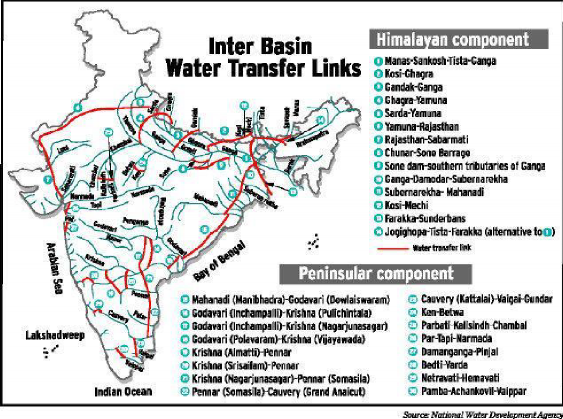4.6. National River Linking Project
The idea of linking water surplus Himalayan rivers with water scarce parts of western and peninsular India has been doing the rounds for the past 150 years. The rivers of India carry huge volumes of water per year but it is unevenly distributed both in time and space. There are perennial rivers carrying water throughout the year while the non-perennial rivers have very little water during the dry season. During the rainy season, much of the water is wasted in floods and flows down to the sea. Similarly, when there is a flood in one part of the country, the other area suffers from drought. Such linkage is said to provide major benefits such as irrigation, assured drinking water, flood and draught prevention, generation of electricity, and inland navigation. Nevertheless, project is facing several challenges in its implementation. Project involves hundreds of billions of dollars that India could not afford. Water shortage Peninsular plateau has higher altitude compare to water surplus Ganges plains. Carrying water to higher level required either electricity to pump water or create chain of deep channels which seems very difficult in rocky Peninsular. Project will have to acquire lakhs of hectares of land. It will affect the ecosystem(submergence of forest land, deforestation, flora and fauna) and rehabilitation issue of lakhs of displaced persons.

